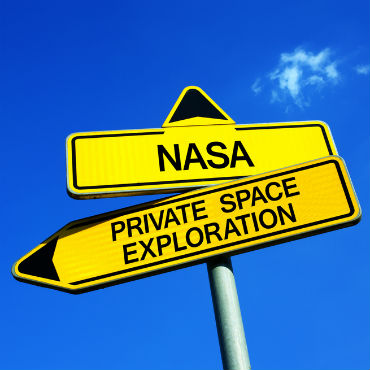FAA should examine near-space vehicles, GAO says

GAO has told the FAA to take a look at how it might regulate near-space vehicles as commercialization of the last frontier continues.

The Government Accountability Office is urging the Federal Aviation Administration to investigate how it might regulate vehicles that aren't quite spacecraft and aren't quite aircraft but touch both environments.
In a report released on Nov. 25, GAO told the Transportation Department that the FAA should take a closer look at whether its rules can handle the growing number of "space support vehicles" traversing the Earth's atmosphere, pushing spacecraft into orbit or performing other extreme-altitude work.
Specifically, auditors said the FAA administrator should investigate whether the agency's current regulatory framework, which focuses on aircraft, is appropriate for a variety of airborne vehicles that include high-performance jets, balloons and the aircraft portion of hybrid systems that also contain a rocket-powered launch vehicle.
The FAA should suggest legislation, regulatory changes or both as needed to help the U.S. foster commercial development of such technologies, GAO said.
Companies that are pursuing privatized space travel and research told GAO officials that the FAA's current regulatory approach presents a market challenge because they cannot get the necessary approval for aircraft to carry passengers or cargo for pay, which limits their ability to operate in the developing commercial space travel market.
In addition to officials at the FAA and NASA, auditors interviewed 37 legal experts and representatives of industry organizations, launch companies, space support companies and spaceports. Although the size of the growing commercial market for those kinds of aircraft and facilities is unclear, GAO said companies were performing research and development work in other countries because of regulatory difficulties in the U.S.
Auditors concluded that the U.S. has lengthy, time-consuming permitting processes and other rules governing the vehicles' use in U.S. airspace. For instance, FAA regulations do not allow companies with aircraft operating under experimental certificates to be compensated for carrying people or property. Other rules are aimed specifically at space vehicles, not near-space support vehicles. Furthermore, the FAA's Office of Commercial Space Transportation is only authorized to regulate commercial space activities, such as launches, and it focuses on the safety of third parties.
Some company officials told GAO that they would like to use high-performance jet aircraft to train future spaceflight participants by exposing them to physiological and psychological conditions similar to actual spaceflight. Others would like to use space support vehicles to see how objects or people react in reduced-gravity environments.
However, GAO auditors said it is difficult to know the size of the market for spaceflight training and research because they could find no relevant studies.
Nevertheless, new rules governing commercial spaceflight have moved through Congress. In September, the House voted unanimously to encourage the FAA to investigate what role it might play in directing commercial and foreign space traffic in U.S. airspace. The Senate approved the measure on Nov. 16, and it was sent to the White House for President Barack Obama's signature. The bill would authorize a study of the impact such a shift might have.
Currently, the Defense Department is responsible for alerting satellite operators about potential collisions, and Congress would need to approve a change in authority.
NEXT STORY: NARA names new FOIA ombudsman


